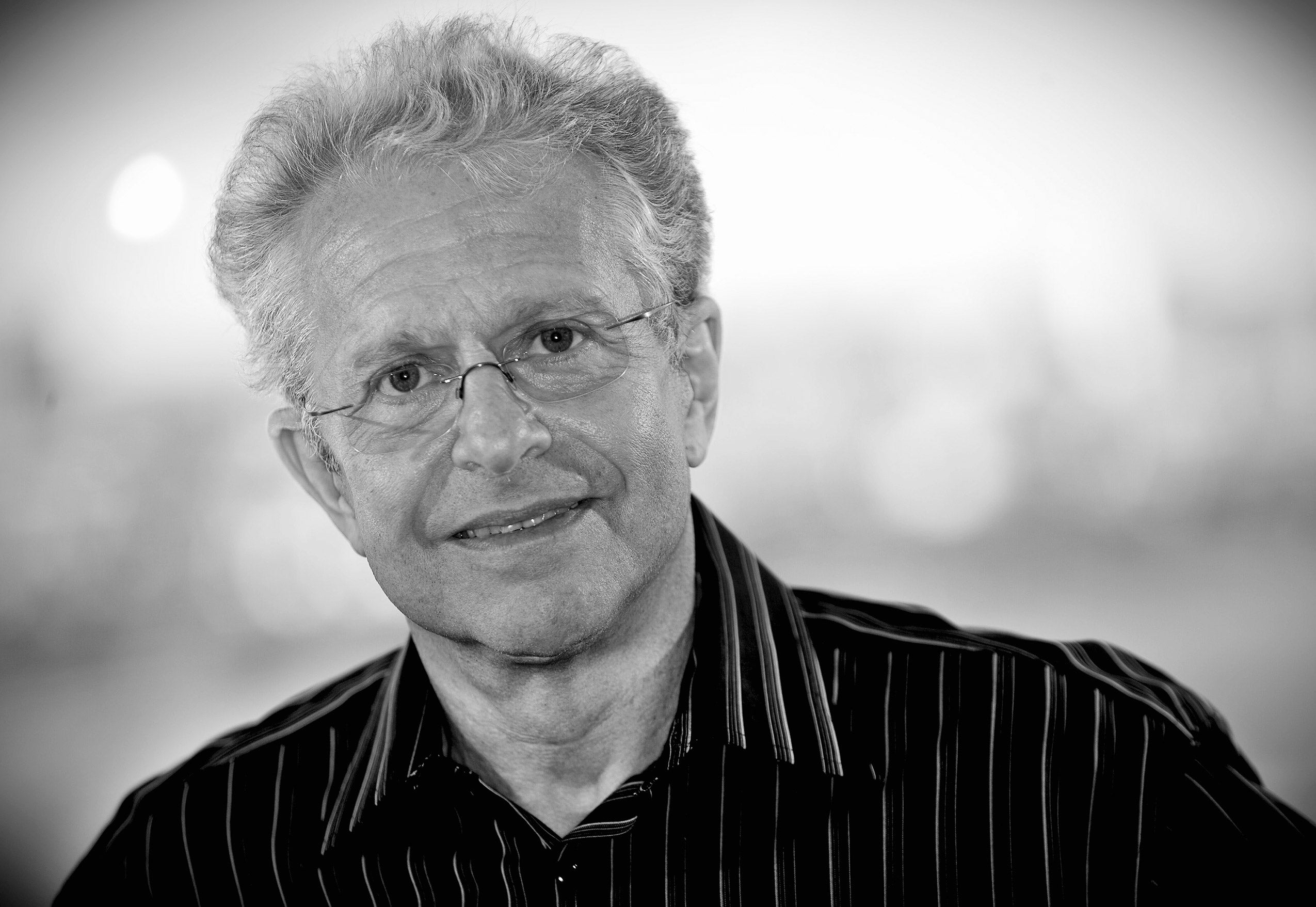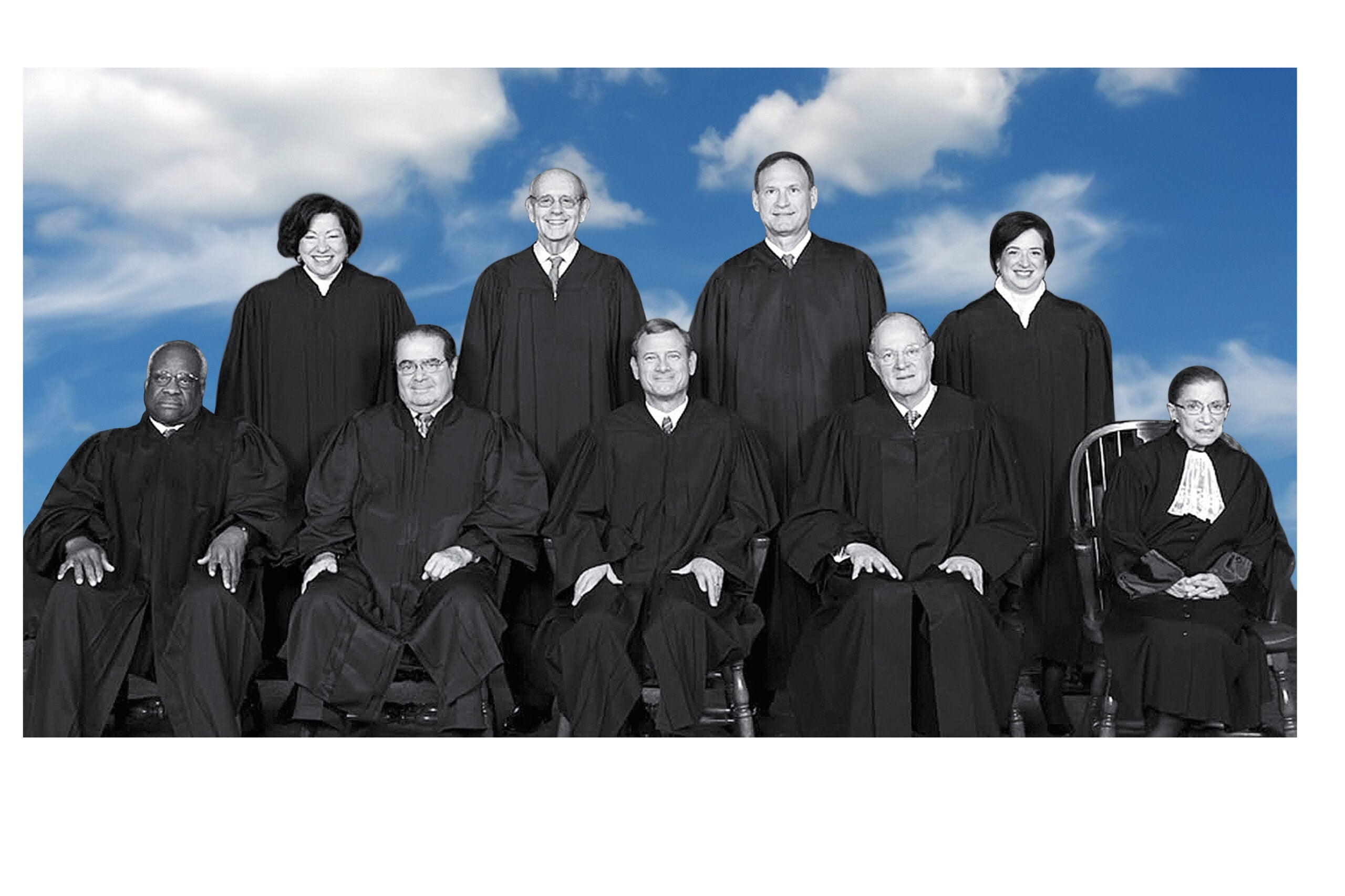“Uncertain Justice: The Roberts Court and the Constitution” is the fruit of a collaboration that began in 2011, when Professor Laurence Tribe ’66, pre-eminent authority on the Constitution, hired Joshua Matz ’12 as head teaching fellow for a new Harvard undergraduate course on the U.S. Supreme Court. In their book, which came out this summer, Tribe and Matz focus on the Court’s activity since 2005, when John G. Roberts Jr. ’79 was appointed chief justice. In a Q&A with the Bulletin, Tribe discusses some of the implications of the decisions of nine men and women with regard to gay marriage, gun rights, N.S.A. surveillance, health care, emerging threats to privacy, immigration and more.
Bulletin: What most distinguishes this Court from the Rehnquist Court and others preceding?
Tribe: The Roberts Court is, on the whole, the most legally sophisticated we have seen in our lifetimes. Partly as a result, for a public that is smart but not legally trained, this Court has paradoxically become among the most mysterious and confusing. It has a few clear agendas that are not too difficult to describe: less separation between church and state, less attention to our troubled racial history and more belief that we can overcome that history by paying less attention to race, greater tolerance for sexual difference but not so much attention to gender discrimination, more focus on states’ rights even when the result may be to damage the ability of the federal government to cope with national and global problems. But outside those areas, the Court can be a source of great puzzlement that can best be untangled by viewing the justices as individuals with distinct perspectives on what the Constitution is all about rather than as political partisans.
The Roberts Court opinions include those you call “thunderbolts that rock American life.” Can you illustrate what you mean?
This Court’s opinions have shaken American life on issues of sex and marriage, of race and religion, of health care and personal liberty. By invalidating the centerpiece of the Defense of Marriage Act and upholding most of the Obama administration’s signal domestic measure, the Affordable Care Act, while at the same time holding that family-owned corporations with thousands of employees may opt out of the ACA’s contraception mandate, the Roberts Court has repeatedly surprised the pundits and reshaped our national landscape. “Uncertain Justice” explains why those who looked more carefully at the Court’s history should not have been surprised by any of those rulings.
Roberts cast the deciding vote in 2012, and the Affordable Care Act squeaked through the constitutional challenge, but you state that the “decision’s value as a sign of things to come is far more important.” How so?
A careful analysis of what drove the chief justice to vote as he did in that case, a vote I predicted publicly on several occasions, reveals an approach to government that John Roberts has consistently pursued—and an approach that is likely to lead to future restrictions on coercive uses of federal regulatory authority while upholding federal power to achieve social objectives through the use of tax incentives that nudge people to make the choices that the federal government concludes will serve the national interest.

In “Uncertain Justice,” you write: “Equality is an explosive principle on the Roberts Court” and also that “decisions made by this Court may define what ‘Equal Protection of the Laws’ means in the 21st century.” Could you talk a bit more about this?
The current Court has come ever closer to concluding that America has transcended its troubled history of racism and can best complete that difficult journey by acting as though race no longer matters, while four justices continue to argue passionately that we are not nearly there yet and have miles to go before we sleep. With Justice Kennedy [’61] holding the decisive vote on those crucial race issues, the future of our struggle with race discrimination is necessarily uncertain. On gender, the Court has been remarkably silent for years; but there is reason to believe that its sensitivity to gender discrimination is far more limited than its sensitivity to discrimination based on sexual orientation, with the embrace of full marriage equality likely to be just around the bend.
The Roberts Court is described, often, as “pro-free speech.” Is that so?
The record of the Roberts Court on issues of free speech is much more mixed than most people seem to recognize. Although it has been highly protective of political campaign speech by individuals, corporations, and unions with deep pockets, it has been disappointingly stingy about the speech of students, prisoners, public employees, and human rights activists … and has at times invoked free speech values to restrict economic regulation essential to the protection of consumers.
You’ve said the Roberts Court is just beginning to suggest how the Constitution will be used to delineate 21st-century privacy. What do you discern so far—for example, with regard to new technologies?
The Roberts Court has been quite farsighted in approaching the threats to privacy posed by such new technologies as GPS tracking and smartphones but less so in grappling with DNA databases and texting. This is one of the many areas in which unusual alliances among justices from opposite ends of the political spectrum and unusual clashes between justices of allied political ideologies reveal the need to get beyond the cardboard-caricatures through which the media tend to depict the members of the Court.
“I see no real evidence, with very few genuinely rare exceptions, that politics with a capital ‘P’ are shaping the Court’s decisions in any improper sense.”
Laurence Tribe
How have gun rights and opposition fared in the Roberts Court? What makes Heller a landmark decision, in terms of gun regulation and the Second Amendment?
Never before the Heller decision in 2008 and the McDonald decision in 2010 had the Supreme Court interpreted the Second Amendment as the source of an individual’s right to bear firearms independent of any state militia. But the Court’s interpretation of that right has left so much room for reasonable regulation to reduce avoidable deaths and injuries from guns that the main obstacles to such regulation are now cultural and political rather than legal and constitutional.
How has the Roberts Court dealt with competing views of the U.S. presidency, and the need to balance liberty and security—with regard to Guantánamo Bay and N.S.A. surveillance, for example?
The Roberts Court has done more than its predecessors to insist that the president’s powers are limited by constitutional constraints even in a time of war, but has left the elaboration of those constraints mostly to the lower federal courts, which have been extraordinarily deferential to the commander in chief on matters of detail.
Do you see a significant influence of politics—notably, D.C. gridlock and each justice’s own politics—on this Court’s decisions?
The Court’s decisions are undoubtedly, and properly, influenced by the political philosophies of the justices—not in the sense of partisan politics but in the sense that the law of the Constitution is inherently inflected by broadly political ideas about the nature and purposes of government. But I see no real evidence, with very few genuinely rare exceptions, that politics with a capital “P” are shaping the Court’s decisions in any improper sense. The political gridlock of D.C. obviously highlights the way in which the Supreme Court remains probably the only well-functioning branch of government, but I see no evidence that the Court is asserting itself more actively as a response to the paralysis of the other branches.

Decisions like Citizens United have led many to believe the Roberts Court is pro-business, at the expense of regular citizens. Do ordinary people have less access to legal remedies and to the courts?
Although “Uncertain Justice” goes out of its way to show that, on nearly all of the highly controversial issues reaching the Roberts Court, there are strong arguments to be made on all sides, the one issue on which I have found it hard to be entirely evenhanded has been this Court’s persistent tendency to uphold obstacles that prevent ordinary people from vindicating their basic rights in our courts. That is why I have described this as an increasingly “anti-court Court,” less because of any bias in favor of business as such than because of an apparently sincere (even if often misguided) conviction that litigation and judicial remedies tend to be more wasteful and inefficient than arbitration and the resolution of disputes by expert administrators.
What do you mean when you say decisions from the Roberts Court in certain areas could be “uniquely” durable?
Inertia has a powerful effect in giving Supreme Court decisions great staying power even when they represent narrow victories for one view over another. That durability is likely to be especially great when the decisions have, for better or worse, adopted approaches that are calculated to make technological change irrelevant to the principles the Court announces.
According to your book, the Roberts Court’s temperament reflects the “deregulatory and cynical tenor of our age.” What does this mean?
I mean that a reluctance to embrace bureaucratic regulation, a preference for solutions that respect personal liberty, and a suspicion of government motives and of government competence, characterize this period in our history.
What legal approaches—originalism, for example—have dominated this Court?
The obsession with distinctive methodologies for interpreting and implementing the Constitution and laws of the United States is a characteristic obsession of academics and commentators rather than of the justices themselves. Although Justices Scalia [’60] and Thomas have focused on what they see as the virtues of trying to stick to the original meaning of the Constitution, they have won more converts among a few academics and students than among their colleagues on the Court, and justices like Alito have even made light of their efforts, joking from time to time about how those efforts amount to pointless inquiries into what James Madison might have thought about video games. In the end, no particular legal approaches have emerged as dominant or even as consistently influential.
Congressional overrides have fallen sharply, leaving Roberts Court decisions unchallenged. If Congress isn’t keeping as close a watch, which this suggests, or fixing anything, what are the risks?
The risks I see entail giving the Court too much leeway to refashion Acts of Congress along lines that the literal language of those enactments might suggest but that clearly undermine what Congress was trying to achieve.
According to the book, Debo Adegbile of the NAACP speaking for 11 minutes during Shelby County was the only time a black lawyer addressed the Court in 2012’s 75 hours of oral arguments. What should we take from this stark fact?
To me, this fact speaks volumes about how great a distance we have to travel as a society before we can afford to act as though race and color no longer make a difference to individual opportunity.
